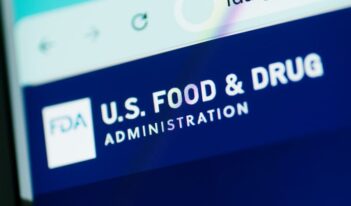
Industry lobbyists and safety advocates testify to the benefits and burdens of two major proposed rules.
While Congress fought last week over sequestration, the Food and Drug Administration (FDA) took on bagged lettuce, raw onions, and E. coli.
Last Thursday and Friday, the FDA held a public meeting to discuss two proposed food safety rules covering hundreds of thousands of farms and food manufacturers. These proposed rules implement the Food Safety Modernization Act (FSMA), signed into law by President Obama at the beginning of 2011.
Prior to the passage of FSMA, the FDA had taken some major steps to increase food safety, such as by adopting comprehensive seafood safety regulations in 1995. But the 2011 law represented the first major reform of FDA’s statutory food safety authority in over 70 years.
This “historic” law has provided FDA with a “new paradigm” for food safety regulations, according to FDA Commissioner Margaret Hamburg. Deputy Commissioner Michael Taylor said that FSMA equips FDA with a “robust new toolkit” for enforcing food safety.
The FDA recently began using that new toolkit by announcing two major proposed rules that aim to make significant improvements in the safety of the nation’s food supply.
The FDA’s first proposed rule establishes standards for the handling of fruits and vegetables on farms. It involves inspecting agricultural water before the growing season, enforcing a codified procedure for the handling of manure and other biological fertilizers, and mandating worker health and hygiene.
According to FDA’s Regulatory Impact Analysis (RIA), the proposed produce handling rule would prevent 1.75 million food borne illnesses annually, with an “associated net benefit” of $1 billion annually. Conversely, it would cost over 40,000 domestic farms a total of $460 million annually and another roughly 15,000 foreign farms (those shipping to the U.S.) a total of about $170 million, for a combined cost of roughly $630 million.
The second proposed rule would mandate that all human food processing facilities currently required to register with the FDA develop written “hazard analysis” plans and enact “preventive controls” which minimize those hazards, monitor results, and correct problems.
The RIA for the proposed food process safety rule estimates that 1,000,000 illnesses each year derive from food covered by this rule. At $2,000 per illness, calculated based on an extensive list of medical and psychological costs, the proposed rule would save $2 billion per year. As for costs, it would regulate about 98,000 domestic and 109,000 foreign facilities at a first year cost of $701 million and then an annualized cost of $472 million.
Based on the FDA’s numbers, the benefits clearly justify the costs. Nevertheless, public comments from stakeholders and industry lobbyist at the hearing revealed widespread concern with ambiguity of language, unforeseen costs, inconsistent inspection and enforcement practices, and purportedly unfair or unjustified exemptions.
Appearing at the hearing on Thursday, Michael Tabor of Maryland personified the reactions of at least some small famers. Tabor asked the six-person panel of FDA lawyers, economists, and scientists why they did not include an ordinary farmer like him in their regulatory brain trust. Tabor also wanted greater exemptions for small farms growing “zero-risk” produce never proven to cause foodborne illnesses.
But for every Michael Tabor at the hearing there was an industry representative like Tom Stenzel, President of the United Fresh Produce Association. Stenzel questioned the proposed produce rule’s existing small farm exemption, which basically says that farms averaging food sales less than $500,000 per year would be partially exempt, while those averaging less than $25,000 per year would not be covered at all. As a representative of what small farmers might call “big agriculture,” Stenzel and other food industry representatives testifying at the hearing opposed granting exemptions to smaller competitors.
These and other exemptions dominated the testimony offered at the FDA’s public hearing. Sandra Eskin, director of the Food Safety Campaign at PEW Charitable Trusts, expressed apprehension over a provision in the proposed produce rule exempting farms producing food not intended for raw consumption, such as beets or potatoes. While PEW and other food safety organizations had lobbied hard for FSMA, they apparently remain concerned that the proposed rule will be too lax in certain respects.
Other consumer advocates lined up with “big agriculture” to oppose the small farm exemption, arguing that tainted food could just as easily come from a small farm.
Erik Lieberman, regulatory counsel for the Food Marketing Institute, asked about a provision of the proposed rule which exempted facilities that only handle “packaged foods.” Lieberman inquired about what exactly constituted “fully packaged,” an example of some of the terms in the proposed rule that several witnesses found ambiguous.
Another point of contention at the hearing centered on testing – both of pathogens and environmental contaminants.
FDA inserted testing language in the appendix of the proposed process rule. Eskin, however, suggested it should be in the actual rule, not relegated to the appendix. Likewise, representatives from STOP Foodborne Illness, such as Ronald Napier, called for even more extensive product testing to ensure full compliance. Lieberman worried, on the other hand, that appendix language might become rule language without sufficient time for public comment. Others, such as Zara Khaleeli of the National Confectioners Association, appeared to oppose product testing altogether.
Some of the most moving comments came from representatives of STOP Foodborne Illness. Dana Dziadul, a fifteen-year-old girl from Florida, contracted salmonella at age three and almost died of blood poisoning. She recounted her grim hospital experiences and attempted to verbalize the awful toll food poisoning has taken on her life. Another young STOP representative described hers
elf as an “emotional and physical disaster” because of a severe E. coli infection from tainted spinach.
Deputy Commissioner Mike Taylor later remarked at the hearing that such personal testimonies had a powerful effect on people like himself, for whom food safety is a professional responsibility.
For the most part, the FDA officials at the hearing spoke in measured, sometimes technocratic, terms. Hence the audience heard from the FDA about food safety from “farm to table” using “reasonable,” “science based,” and “risk based” regulatory criteria. Instead of continuing with “reactive” regulations, which had produced an “unacceptable” status quo, FDA officials said they sought a transition to “preventive” regulation, buttressed by “alliances” and “partnerships” with the community.
Moving forward, the FDA will focus on digesting all the comments received on the proposed rules before making any decisions about how, if at all, to revise them before making them final.



